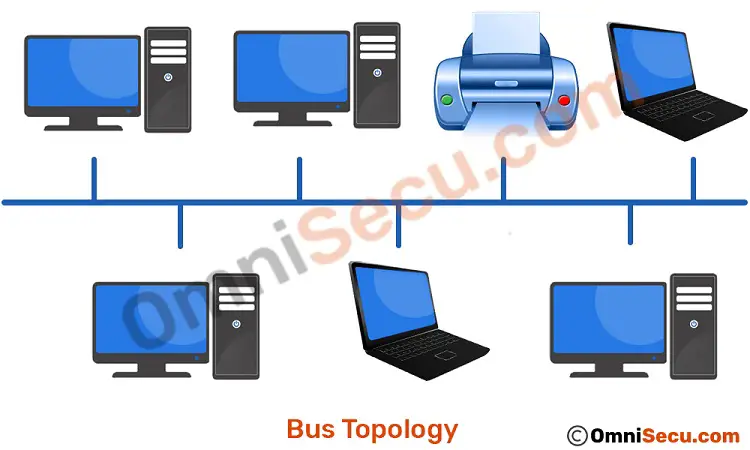What is Bus Topology, Advantages and Disadvantages of Bus Topology
A network topology is the physical layout of computers, cables, and other components on a network. There are a number of different network topologies, and a network may be built using multiple topologies. The different types of network layouts are Bus topology, Star topology, Mesh topology, Ring topology, Hybrid topology and Wireless topology. This lesson explains what is bus topology.
Bus Topology
A bus topology consists of a main run of cable with a terminator at each end. All nodes like workstations, printers, laptops, servers etc., are connected to the linear cable. The terminator is used to absorb the signal when the signal reaches the end, preventing signal bounce. When using bus topology, when a computer sends out a signal, the signal travels the cable length in both directions from the sending computer. When the signal reaches the end of the cable length, it bounces back and returns in the direction it came from. This is known as signal bounce. Signal bounce may create problems in the computer network, because if another signal is sent on the cable at the same time, the two signals will collide. Collisions in a computer network can drastically reduce the performance of the computer network.

Advantages of Bus Topology
• Easy to connect a computer or peripheral to a linear bus.
• Requires less cable length than a star topology.
Disadvantages of Bus Topology
• Entire network shuts down if there is a break in the main cable.
• Terminators are required at both ends of the backbone cable.
• Difficult to identify the problem if the entire network shuts down.
• Not meant to be used as a stand-alone solution.